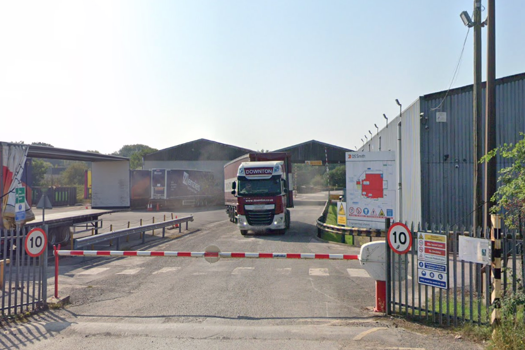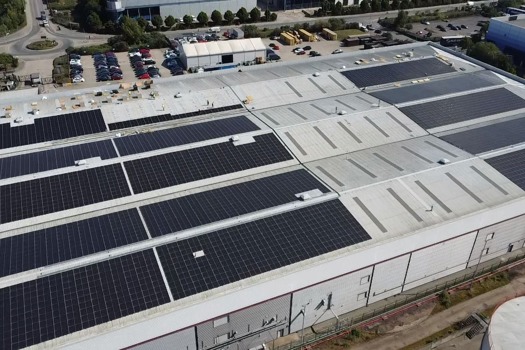For many printers, the reasons for not adopting JDF boil down to money: they either haven't got any or they are unconvinced that JDF is going to repay enough of it quickly. However, in order to understand the real value of JDF it is necessary to reassess what it does.
The twin purposes of JDF are to integrate production and administration - providing instructions to production kit about what it will be doing and the settings required - and provide a job messaging format (JMF) to provide feedback on what was done to the management information system (MIS) and/or other production kit.
Integration is the key word and although take-up of JDF may be slower than initially predicted, firms are integrating their factories and their MIS - they are just finding cheaper ways of doing it than buying a floor-full of JDF-capable kit.
"It comes down to the level of investment and the return," says Peter Griffin, managing director of MIS vendor Solprint. "The investment required to make some pieces of kit JDF compatible can be too high - the costs can be ridiculous."
He adds that as a result firms have embraced other, lower cost tools to achieve the same aim of integrating their production and administration departments and of streamlining processes as much as possible.
Lower-cost options
Examples include fitting direct machine interfaces to older presses and pieces of post-press kit so that they can provide feedback to the MIS about their status, such as whether they are on the run or in makeready, producing good copy or waste, running speed, number of copies produced, and number of copies left to go.
And it's not just in production where businesses are seeking to streamline their processes. Griffin also says a lot of firms are working on cutting out costs in their estimating and quoting departments.
"JDF is about streamlining processes," he says. "You can speed up the entry of works instructions and of updating information through the use of spreadsheets, saving time and cost in data entry."
Griffin argues that at the beginning of the process there's no difference between data being supplied in a spreadsheet or a JDF, apart from the fact that if printers don't have full JDF capabilities, clients are even less likely to.
"You could use JDF created by someone else to automate your front-end systems, but most clients can't create JDFs, hence the use of spreadsheets."
With the economy constraining investment while driving the need to improve efficiency, firms are looking at how they can get the most from the tools that they've already got.
"Customers are using their MISs more," says Griffin. "They're using all the modules in their systems to streamline their processes. The current climate is good in a way for MIS. It's not new business, but people are looking to us to get the most from their existing investment."
Matthew Trounce, managing director at Bristol-based B1 commercial printer EPC Direct, concurs.
"In today's market, where we're seeing pressure on turnover and margin, MIS comes to the fore," he says. "Previously we used our MIS to estimate and to book in jobs, but its best feature is actually to help work out what you're good at and what you're bad at. Then you can focus on what you're good at and fix what you're bad at."
EPC Direct is an all-Heidelberg house running a 12-colour Speedmaster 102 with Cutstar and a five-colour plus coater CD 102 feeding a bindery equipped with folding, stitching and trimming. The job mix of the £5.4m turnover, 42-staff firm ranges from flyers through to report and accounts.
It uses Heidelberg's Prinance MIS, which is integrated with pre-press, printing and post-press. As it has a single-source supplier and runs some of the latest kit, the firm already uses JDF widely, starting with the estimate and running through all the departments to pre-set as much as possible including the ST450 stitcher and the guillotines.
"Everything flows in, and as a consequence makeready is very fast," says Trounce.
However, while the firm benefits from the efficiency offered by pre-setting, Trounce believes the biggest benefit is getting good data back from the shopfloor and using that to drive the business forward, with data collection being central to that.
"We recognised through analysis of the data that the time between jobs was too great," he says. "We worked with our teams to change the way they were operating."
Whereas before the teams would use changeover as a chance for a break, using data from the MIS allowed EPC to show staff how that was impacting the business and to work with them to come up with a solution.
As a result they now focus on getting the next job ready before the last one has finished and on minimising downtime, taking time to relax once it's running.
"The guys on the shopfloor now want that information," he says. "We've now got competition between the shifts to see who has the least amount of unproductive time."
However, getting to that stage took commitment from the management team to make sure all departments bought into the new way of working and an understanding that it takes time and effort to make the most of the investment.
"It's a failure in the part of both printers and vendors to think that an MIS can be up and running to its full potential in five minutes - it can't," says Trounce. "It's an evolving process. It takes six months to get everything working in a fashion and 12 months to get it working perfectly."
Swindon-based ESP Colour's managing director Anthony Thirlby agrees with Trounce on the need to invest time and effort as well as cash.
"People don't put the work in to make MIS work," he says. "It takes time and hard work."
Money maker
He thinks that printers who don't use their MIS and where possible JDF and JMF to manage and automate their businesses, are missing a trick.
"We set up our processes to make money," he says. "It's always about gaining more revenue per head and technology helps us achieve that."
The firm uses a Tharstern MIS, Heidelberg presses and post-press, and recently installed Kodak's Prinergy and Insite pre-press tools to streamline its processes from 22 steps before platemaking to just six. ESP runs lean; its £12m turnover is achieved with just 62 staff, which is down to its use of technology to drive the business.
ESP uses its MIS to monitor all parts of the business with every cost centre targeted with maximising its value. "It's about maximising the business," he says. "At 10am we have a sales meeting looking at what capacity we've got and how we're going to fill it. We're never full, the presses might be busy, but if pre-press or folding are quiet we flex the job mix up and down as required to fill all our cost centres."
Being able to do that relies on having accurate and up-to-date information. In addition to its MIS, ESP has invested in custom scripting and direct machine interfaces to get the data it wants in the format it needs.
"It's frustrating, but I understand MIS vendors need to supply a product that is suitable for everyone, so we need to integrate," says Thirlby.
And after installing a system you can't just sit back and reap the rewards, he adds.
"Once you've established your data you need to keep checking it - it's a daily process, otherwise how do you know what you're estimating?"
For Thirlby, there's no alternative to investing the considerable time and effort needed to make the most from your MIS to streamline processes and provide relevant data to drive decision-making.
"I just don't understand how you can run a business without it," he concludes.
MIS: Making the most of your investment
1 Use the system to its full extent
Using the system for estimating and booking in jobs only uses a fraction of the considerable cost of a system. Maximise your return by using the system not only to drive production, but also to get feedback about your performance and how to improve things
2 Get staff to buy into it
EPC’s Trounce says that initial scepticism at EPC was overcome by getting staff involved in the demonstrations and allowing them to drill down into the system to understand how it would impact their job
3 Empower staff to improve performance
This can be done by using feedback from the MIS. One operator reduced his non-productive time per shift from 40-20% by having an awareness of what he was doing, says Trounce
4 Treat using your MIS as a journey not a destination
MIS is a moving feast – don’t install it and forget it, you have to continuously upgrade your software and your data, says Trounce
5 Don’t get hung up on the need for JDF and JMF
Investigate whether you can fit direct machine interfaces to existing kit to get the information needed to manage improved efficiency without the expense of totally retooling the factory









